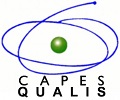Media Archaeology and Literary Studies
DOI:
https://doi.org/10.14409/eltaco.2022.16.e0078Keywords:
media, literary theory, media archaeology, Friedrich Kittler, Marshall McLuhanAbstract
The relationship between literature and the media has been the subject of debate for many decades. Although this debate was often presented in the simplified form of a confrontation, there were numerous critics and theorists who aspired to associate problems of literary theory and analysis with the study of the media and their effects on society and human consciousness. In recent years, «media archaeology» has made its appearance in the intellectual landscape of the humanities as an attempt to rethink the storage, processing and transmission technologies within the framework of a new transdisciplinary perspective on culture that takes up many elements of Michel Foucault, Marshall McLuhan and the German theoretician Friedrich Kittler. We aspire to present some of the main guidelines of this perspective, with particular emphasis on its conceptualizations of history and historiography and on the different ways in which it is articulated with literary analysis.
References
Avanessian, A. y Reis, M. (Eds.) (2019). Aceleracionismo: Estrategias para una transición hacia el postcapitalismo. Caja negra.
Bolter, J.D. y Grusin, R. (1999). Remediation: Understanding New Media. The MIT Press.
Borsuk, A. (2020). El Libro Expandido Variaciones, Materialidad y Experimentos. Ampersand.
Brina, M. y Tejero Yosovitch, Y. (2019). El kentuki es el mensaje. La ficción en red de Samantha Schweblin. Revista Luthor, (42), 14‒39.
Burkett, A. (2016). Romantic Mediations: Media Theory and British Romanticism. SUNY Press.
Cavallo, G. y Chartier, R. (Eds.) (2001). Historia de la lectura en el mundo occidental. Taurus.
Citton, Y. (2017). Restructuring the attention economy: Literary interpretation as an antidote to mass media distraction. En Economics and Literature (pp. 1‒16). Routledge.
Curtius, E.R. (1999). Literatura Europea y Edad Media Latina. Fondo de Cultura Económica.
Emerson, L. (2014). Reading Writing Interfaces: From the Digital to the Bookbound. University of Minnesota Press.
Epstein, A. (2016). Attention Equals Life: The Pursuit of the Everyday in Contemporary Poetry and Culture. Oxford University Press.
Ernst, W. (2011). Media Archaeography: Method and Machine versus History and Narrative of Media. En Huhtamo, E. y Parikka, J. (Eds.), Media archaeology approaches, applications, and implications (pp. 239‒255). University of California Press.
Flusser, V. (1990). Hacia una filosofía de la fotografía. Trillas.
Foucault, M. (2007). La arqueología del saber. Siglo XXI.
Gadamer, H.G. (1999). Verdad y método. Sígueme.
Gallo, R. (2014). Máquinas de vanguardia: tecnología, arte y literatura en el siglo XX. Sexto Piso.
Gasparini, S. (2012). Espectros de la ciencia: fantasías científicas de la Argentina del siglo XIX. Santiago Arcos.
Huhtamo, E. y Parikka, J. (Eds.) (2011). Media Archaeology Approaches, Applications, and Implications. University of California Press.
Jameson, F. (2015). The Political Unconscious: Narrative as a Socially Symbolic Act. Cornell University Press.
Jones, P. (1998). The Technology Is Not the Cultural Form?: Raymond Williams’s Sociological Critique of Marshall McLuhan. Canadian Journal of Communication, 23(4), 423‒454.
Kittler, F.A. (1985). Aufschreibesysteme: 1800/1900. Wilhelm Fink.
Kittler, F.A. (1986). Grammophon, Film, Typewriter. Brinkmann & Bose.
Kozak, C. (2017). Literatura expandida en el dominio digital. El Taco en la Brea, (6), 220‒245.
Lanham, R.A. (2001). What’s Next for Text? Education, Communication & Information, 1(1), 15‒36.
McLuhan, M. (1962). The Gutenberg Galaxy; the Making of Typographic Man. University of Toronto Press.
McLuhan, M. (1964). Understanding Media. McGraw-Hill.
McLuhan, M. (2006). The Classical Trivium. The Place of Thomas Nashe in the Learning of His Time. Gordon, T. (Ed.). Gingko Press.
Mendoza, J.J. (2019). Avatares de los textos en la época de la reproductibilidad digital. (Ensayo para una historia de las textualidades). Bibliographica, 2(1), 197‒224.
Ong, W. (1987). Oralidad y escritura. Tecnologías de la palabra. Fondo de Cultura Económica.
Parikka, J. (2012). What is Media Archaeology? Polity Press.
Quereilhac, S. (2016). Cuando la ciencia despertaba fantasías prensa, literatura y ocultismo en la Argentina de entresiglos. Siglo XXI.
Schaeffer, J.-M. (2013). Pequeña ecología de los estudios literarios. ¿Por qué y cómo estudiar la literatura? Fondo de Cultura Económica.
Scolari, C.A. (2015). Ecología de los medios: entornos, evoluciones e interpretaciones. Gedisa.
Strauven, W. (2013). Media Archaeology: Where Film History, Media Art, and New Media (Can) Meet. En Noordegraaf, J.; Saba, C.G.; Le Maître, B. y Hediger, V. (Eds.), Preserving and Exhibiting Media Art (pp. 59‒80). Amsterdam University Press.
Vanoli, H. (2019). El amor por la literatura en tiempos de algoritmos. Siglo XXI.
Vilar, M. (2021). Grandes relatos, tecnología y horizontes colectivos. Propuestas y problemas hermenéuticos de la teoría de medios. Luthor, (50), 41‒48.
Winthrop-Young, G. (2011). Theory and Media: Kittler and the Media. Polity.
Zielinski, S. (1999). Audiovisions: Cinema and Television as Entr’actes in History. Amsterdam University Press.
Zielinski, S. (2006). Deep time of the media: toward an archaeology of hearing and seeing by technical means. MIT Press.





















